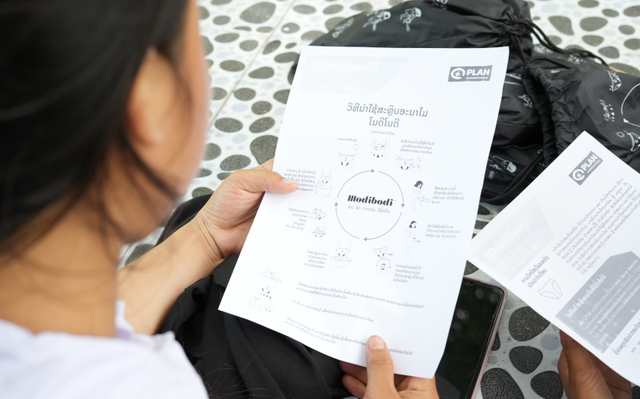Struggling with painful, heavy periods? Don’t know why? Maybe adenomyosis is the answer.
Of course, it may not be, but adenomyosis is one of those conditions which most people don’t know about...until they find out (often a long time later) that they have it.
Here’s a rundown of what it is, what to look out for, and when to seek help, because the more we talk about and normalise our periods and our bodies, the less alone we’ll feel.
Often confused with the better known endometriosis (where cells like those which line the uterus grow outside the uterus in places like the ovaries, pelvic cavity and fallopian tubes), in adenomyosis, the cells which normally form the uterine lining grow into the muscle wall of the uterus as well.
What does the name adenomyosis mean?
For a complex-sounding word, it’s actually pretty simple. It comes from combining adeno (gland) with myo (muscle) and osis (condition).
Can you have both endometriosis AND adenomyosis?
It’s like the opposite of winning the lottery, but yes, you can. And unfortunately, a number of women do.
What causes adenomyosis?
Like with many conditions in the reproductive system, there’s no clear cause, but adenomyosis is only seen in women of reproductive age because it needs the hormone oestrogen to grow (so tiny bit of good news, once you reach menopause it should go away on its own – if you’re a long way off that’s hardly any consolation...sorry)
Research suggests that prior surgery, inflammation of the uterine lining after childbirth and uterine lining tissue making its way into the uterine muscle during foetal development may be contributing factors.
As such, the only ‘known’ risk factors are childbirth, and having had previous uterine surgery, such as a C-section, or fibroid removal surgery, which means adenomyosis is most commonly seen in those aged between 30 and 50. Of course that doesn’t mean you can’t get it earlier...sadly, you can.

Image source: Jean Hailes Foundation
What are the symptoms of adenomyosis?
The most common symptoms of adenomyosis are unusually heavy menstrual bleeding, painful periods, pain during sexual intercourse, bleeding in between periods and sometimes, if your bleeding is particularly heavy, anaemia symptoms like fatigue and dizziness.
How is adenomyosis diagnosed?
Let’s start with the fact it can be tricky to diagnose. Sometimes, your doctor will be able to feel that your uterus is tender or enlarged during a vaginal examination, but the gold standard test is usually a transvaginal ultrasound performed by a specialist, which is an ultrasound using a probe which is inserted into your vagina to give a better picture of what’s going with your reproductive organs.
Sometimes, your doctor might request an MRI to confirm your diagnosis, since this type of imaging provides a more detailed picture of soft tissue and muscles than ultrasound or x-rays.
In some women, adenomyosis will only be diagnosed after they’ve had a hysterectomy (either because of their heavy painful periods or for another reason) and the pathology results reveal their condition (which often explains a LOT!)
What’s the treatment for adenomyosis?
Mmm, this is where things get tricky. It can be tough to treat (why does this always seem to happen to us?), and since it should disappear with menopause, the way it’s treated will depend on your age...and life stage.
An IUD (intrauterine) device, such as the Mirena, can be used to help thin the endometrium, reduces the size of the uterus, minimise the pain caused by intercourse and reduce bleeding.
A specific class of artificial hormone which prevents natural ovulation called GnRH agonists are sometimes prescribed to help thin the endometrium, shrink the uterus, suppress your natural period and induce a kind of temporary ‘chemical’ menopause to offer relief from symptoms.
As mentioned previously, a hysterectomy, which is the surgical removal of your uterus (and/or ovaries and cervix) will cure adenomyosis by effectively removing it from your body, but depending on your life stage, whether or not you’ve had children and how close you are to approaching natural menopause, this isn’t going to be an ideal solution for everyone.
If your adenomyosis has caused the formation of an adenomyoma, which is a mass of adenomyosis in a particular area, keyhole surgery might be performed to remove it, or it may be treated with high-intensity ultrasound waves, guided by an MRI, to heat the adenomyoma’s cells, which causes them to die.
When should I see a doctor about adenomyosis?
If you’re suffering with particularly heavy bleeding during periods, bleeding between periods, your periods are painful enough to interfere with normal activities, or you have pain during sex, you should see your doctor for an evaluation. Only you know your body, so if something doesn’t feel right, or is messing with your ability to go about your daily life, don’t suffer in silence – speak up!
We spoke to one of our customers that experiences adenomyosis:
My name is Kahlee Scappa and I'm 21 years of age. I grew up in Sydney and in 2019 I packed up my van and moved to Byron Bay because of my love for the ocean and nature. I am a disability support worker and a hairdresser on the side. I'm passionate about helping people and that is why I decided to speak up and share my story.
Q - How long have you had adenomyosis?
A - There is no knowing the exact time my condition started as symptoms can be seen as normal period symptoms and then progress over time. In saying this, my periods started when I was 13 and they were extremely heavy, long and painful, however my symptoms grew much worse in 2019, at the age of 19 and I am now 21. February 2020 a radiologist noted adenomyosis in her report, yet it wasn't confirmed by a specialist till March this year that I have adenomyosis that seems to have been there for years.
My common symptoms include:
- Heavy and prolonged bleeding
- Chronic pelvic pain
- Severe cramping
- Blood clots
- Pain during and after intercourse
- Ovulation pain
- Dizziness and fainting
- Fatigue
Q - How long did it take you to be diagnosed - and how were you diagnosed?
A - I was dealing with symptoms for years, but February 2020 I had an ultrasound done and the radiologist noted seeing adenomyosis. When the doctor reviewed these results, I was left with no advice or direction to get further tests to confirm the condition. The doctor did not even tell me what the condition was. As the symptoms grew worse, I decided to find a specialist to confirm that it was adenomyosis so I could learn more about the disease. I got an MRI done and in March 2021 the specialists confirmed I have very severe adenomyosis.
Q - What is the one thing you'd like people to know about adenomyosis?
A - Adenomyosis is not just extremely painful in a physical sense, but also mentally exhausting. Trust your body, if you believe something is wrong, don't normalize it, always get it checked because unfortunately adenomyosis is commonly misdiagnosed.
For information about adenomyosis, visit: https://www.jeanhailes.org.au/health-a-z/vulva-vagina-ovaries-uterus/adenomyosis or https://www.healthdirect.gov.au/adenomyosis








